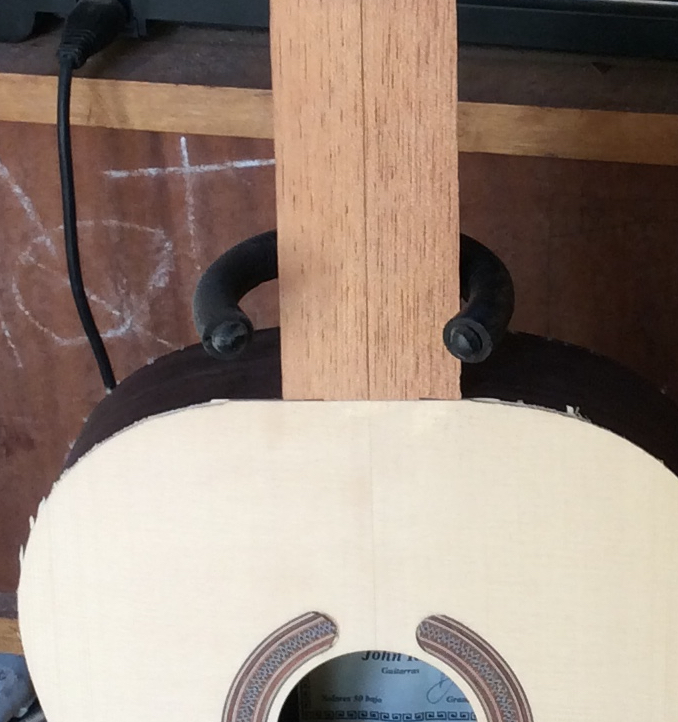 Many guitars are made with an upward (forward) tilt to the neck or a domed upper bout or both. So, when you place a straightedge from nut to soundhole you find a low spot at the neck joint. If this is the case in your construction you cannot just press the fretboard down and have good contact all the way along. The most likely spot for problems is right where the neck meets the top. I have seen a technique that involves removing ebony from certain places in order to allow it to make contact with the entire surface. However, this is not the traditional method. The spanish technique makes use of the easy workablility of the top and neck woods and the flexibility of ebony. Ebony is very hard but despite what you might think from seeing the strips of it glued into guitar necks it is neither strong nor stable. In fact, ebony is probably the worst material you can use for re-inforcing a neck.
Many guitars are made with an upward (forward) tilt to the neck or a domed upper bout or both. So, when you place a straightedge from nut to soundhole you find a low spot at the neck joint. If this is the case in your construction you cannot just press the fretboard down and have good contact all the way along. The most likely spot for problems is right where the neck meets the top. I have seen a technique that involves removing ebony from certain places in order to allow it to make contact with the entire surface. However, this is not the traditional method. The spanish technique makes use of the easy workablility of the top and neck woods and the flexibility of ebony. Ebony is very hard but despite what you might think from seeing the strips of it glued into guitar necks it is neither strong nor stable. In fact, ebony is probably the worst material you can use for re-inforcing a neck.
Fitting the fretboard to the neck and top of the guitar involves modifying not the ebony but rather the neck and top surface. Instead of two planes that meet at the neck joint you create a long, shallow curve. Most of the work will be on the neck, scooping it with scraper and sandpaper. Then, when you press the ebony down it will make good contact at all points. Everything we know about making good joints applies here so make sure at least one of the surfaces is slightly concave laterally and use a thin hide glue. Heat one of the pieces (or both) and do your best to have freshly worked surfaces. Before glueing, test that moderate pressure to the ebony will close the gap to the point where a thin paper strip is trapped at all points. Use newsprint or cigarette paper. You will learn that the most difficult edges are along the top near the neck. It bears repeating that the ebony will conform easily to this curve and you will not be modifying your hard earned neck angle by doing things this way.
